War? What war?
command, control, computers, communications, intelligence, surveillance and targeting
“The defense industry is scrambling to deliver what the military establishment wants in this new world. The buzz word is C41st which stands for command, control, computers, communications, intelligence, surveillance and targeting—the heart of the network-centric warfare
July 20, 2002, The Economist
Cattle identification
https://tass.ru/obschestvo/12750415
Gintsburg explained that it is possible to check whether a person has been vaccinated with Sputnik V or not with the help of a special analysis for the presence of markers of the drug: "We see that people lack these markers in 80% of cases."
According to the Gamaleya director, 80% of Russians who say they were vaccinated with Sputnik V but still end up in a COVID ward are liars who illegally purchased a vaccine certificate.
How does Gintsburg know this?
Because Sputnik V has built-in “markers”:
Gintsburg explained that it is possible to check whether a person was vaccinated with Sputnik V or not using a special analysis for the presence of drug markers: "We see that people lack these markers in 80% of cases."
His provocative claim backfired immediately. Russian media outlets responded to his curious and conspicuously vague disclosure by asking: “what exactly do you mean by markers?”
After a week of silence, Gintsburg issued an update: a special blood test had been developed to check for the presence of adenovirus Ad26, which is used in Sputnik V to transport genetic material to cells. Some experts have claimed this alleged blood test is pointless and makes no sense.
Markers and magnetism of the vaccine - what else is hidden in the Gamaleya Center? The latest statements by the creators of Sputnik V about the composition of the vaccine have aroused the stir interest of Russians. So far, there are more questions than answers.
The head of the Gamaleya Center, Alexander Gintsburg, told TASS that the Sputnik-V drug contains a certain "marker" component that is not excreted from the body for a long time. And thanks to this "marker", it is possible to establish with good confidence whether a person was actually vaccinated or issued a certificate without undergoing the procedure.
State Duma Deputy Mikhail Delyagin appealed to the Head of the Center Gintsburg with a demand to disclose the entire list of unspecified components of Sputnik-V, which are the very special "markers".
After all, now, in fact, all the most fantastic conspiracy arguments have actually been confirmed by the developer of the vaccine himself.
"I am just reminding you that Mr. Gintsburg's subordinate, the head of the laboratory at the Gamaleya Center, speaking on the radio "Moscow Talks" said with a blue eye: if objects are magnetized to the injection site after the injection, then this is absolutely normal. <… >I have heard this from lawyers and therapists in Germany before. But now the developer of the Russian vaccine himself says that in addition to genetically modified organisms, in addition to the elements indicated on the label, there is something else in the vaccine. What else is there? As they said in one film, "announce the whole list." And tell us how these inclusions will affect our health," Mikhail Delyagin.
Institute for Soldier Nanotechnology– MIT– March 13, 2002
Six Key Soldier Capabilities:
Threat detection
Threat neutralization [bullet proof clothing—paper weight chain mail of molecular materials]
Concealment [invisible clothing]
Enhanced human performance [
Real time automated medical treatment
Reduced logistical footprint [reduce soldier equipment from 125-145 lbs to 45 lbs carried by Roman soldiers]
Gray Goo Phenomenon
“We are on the cusp of extreme evil, an evil whose possibility spreads well beyond that which weapons of mass destruction bequeathed to the nation states, on to a surprising and terrible empowerment of extreme individuals.”
Bill Joy, WIRED, April 2000
First we shape our tools thereafter they shape us.
Marshall McCluhan
Wired Magazine, September 2001
QUANTUM COMPUTING
he technology is based on two facts:
Quantum particles such as electrons can exist in multiple states at once. [can be 0 and 1 at same time.]
Particles in a group can become so intertwined that the actions of one can affect all others at the same instant, allowing engineers to build circuits out of individual atoms.
In a QC the bit is upgraded to quantum bit know as a qubit that doesn’t need to choose between 0 and 1.
Computing with Light
https://web.archive.org/web/20010604231159/http://www.nature.com/nsu/010531/010531-5.html
The approach is a kind of intermediate between classical electronic information processing and quantum computing. Quantum computing, which has so far been demonstrated only in the most rudimentary of systems, makes use of the wave properties of particles such as individual atoms, or photons, the particles of light.
Walmsley and colleagues' wave-computing scheme is easier to implement than true quantum computing. Their database is an acousto-optic modulator — it alters light waves with sound waves. It consists of a block of tellurium dioxide vibrated by an acoustic transducer, rather like a loudspeaker.
The acoustic waves compress some parts of the material and expand others, locally altering the way it interacts with light. Information is encoded in this pattern of expansion and compression.
The database is searched using a light beam that is split in two. One half passes through a prism that splits it into its component frequencies. Different colours pass through different parts of the acousto-optic modulator — that is, different portions of the database. So each bit of encoded information is probed by a different colour.
Depending on the contents of the database, some of these beams are shifted in-phase, so that the peaks and troughs of the light waves coincide. This altered rainbow is recombined by another prism and interacts with the other half of the original beam.
Because of interference effects, the parts of the beam that have been shifted in-phase travel in a different direction to the others, revealing which parts of the database altered the incoming signal. So the researchers can locate the bits of information they are looking for.
This offers the ability to search every part of the database simultaneously, rather than looking through each entry one at a time as a normal computer does. That is not so laborious for a 50-item database, but if the entries run into millions, the economy of performing a single search, rather than millions of consecutive ones, is considerable.
DNA Computing
DNA is both bricks and blueprint—an engineer’s dream.”
Len Adleman of UCLA in Los Angeles created the first computer to use DNA in 1994
https://web.archive.org/web/20010418043428/http://www.nature.com/nsu/000928/000928-10.html
Jigsaws need someone to assemble them, obeying the simple input-output rules. But the DNA 'pieces' in the logic gates created by Nadrian Seeman and colleagues at New York University put themselves together, the scientists report in Nature1.
Imagine tiles with three black or white sides that only join when black edge meets black or white finds white -- two faces act as inputs and the third as the output. The new DNA 'tiles' work in a similar way but each black or white edge is replaced by a piece of single-stranded DNA. If two complementary DNA strands meet then they bind, joining the two 'tiles' (made up of more, twisted DNA).
In this way the researchers make 'exclusive OR gates' (XORs) that respond to two different inputs with a '1' output; identical inputs produce a '0' output. When put together to solve a problem, the output from one XOR tile forms an input to the next (a '1' or '0' DNA 'input' strand provides the other).
So when these DNA tiles are mixed together, they assemble themselves in a certain order. Effectively, the input tiles set a logic question and the XOR tiles solve it. But how do you read the answer?
This is done with a 'reporter' DNA strand, held within each XOR tile. Enzymes cut these strands differently depending on whether the tile is giving a '1' or '0' output. For the string of sequential tiles, the reporter strands are joined end to end -- producing a continuous stretch of DNA, recording whether each logic gate is '1' or '0'. Digesting the reporter strand with enzymes and measuring the fragment lengths reveals each gate's status -- and the answer to the puzzle.
This 'test-tube calculator' works nearly perfectly: fewer than 1 in 20 of the assemblies form incorrectly. All the same, this is an extraordinarily contrived way to tackle a problem that an electronic computer could solve in milliseconds. For all its elegance what use is it?
Seeman's team suggests two possible functions: the first, secret communication. 'Inputs' and 'logic gates' could be sent separately to the intended recipient. Mixing the two, something that could be done only once, would reveal a unique decryption key that would allow the receiver to read a coded message.
Second, the use of DNA to direct the self-assembly of a pattern of individual units might be extended into two and three dimensions -- helping to construct so-called 'smart' materials; substances that form themselves into elaborate and intricate shapes under suitable conditions.
Whether or not potential applications are developed, these self-solving DNA jigsaws show what astounding ideas emerge when seemingly unrelated branches of science -- in this case molecular biology and mathematics -- meet.
The researchers have built a machine that solves mathematical problems using DNA as software and enzymes as hardware. A trillion such biomolecular machines—working at more than 99.8% accuracy—can fit into a drop of water.
John Witfield, Nature 22 November 2002
https://web.archive.org/web/20011204210232/www.nature.com/nsu/011122/011122-11.html
Ray Kurzweil argues that neural implants will confer on human an important advantage that only machines now possess: Instant downloading of knowledge. Memories of events could be played back exactly as they occurred, rather than being colored by emotions. Simulations could make fantasies indistinguishable from reality.
Scientific America 1999
Gathered together at last under the leadership of man[sic] …unified, disciplined armed with secret powers of the atom and with knowledge as yet beyond dreaming, Life, forever dying to be born afresh, forever young and eager, will presently stand upon this earth as upon a footstool, and stretch out its realm amidst the stars.
H.G. Wells, The Outline of History 1920
The world is the next interface.
Neil Gershenfeld, When Things Start to Think, 1999.
https://web.archive.org/web/20050213082306/http://www.govtech.net/news/news.php?id=91809
Development of RFID: Development driven by Wal-Mart and the DoD
01/10/2003:
1940s – UK uses RFID tags to distinguish UK planes…
Dan Rosen, former Dir of Adv R & D for Microsoft: “The most valuable thing we’ve learned is that in the future everything that costs over $25 except food will be connected to the Internet.”
Medical Microelectronic Machines (later nanodocs) tied to NIH databases doing real-time assessment against millions of high-resolution medical records, each with IP address.
Medical Microelectronic Machines:
Gennum
MDS Sciex
Intel
IBM
Research in Motion (RIM)
SiGe Microsystems
MDA Robotics
DALSA
Wescam…
Kevin Warwick, University of Reading, London, February 2000
HE VERICHIP [APPLIED DIGITAL SOLUTIONS] April 2003
Smart Tagging in Healthcare
Implanted medical device identification
Emergency access to patient supplied health information
Portable medical records access
Patient therapy integration
Inter-facility patient identification
And more…
ENIAC—Electronic Numerical Integrator and Computer—February 1946—US Army
ENIAC—Electronic Numerical Integrator and Computer—February 1946—US Army
Moletronics
Nanotechnology
Quantum Computing
DNA/Genetic Computing
Photonics
Holography/crystal computing
Wet wiring
What is Nanotechnology?
“The shotgun marriage of chemistry and engineering called ‘nanotechnology’ is ushering in the era of self-replicating machinery and self-assembling consumer goods made from cheap raw atoms.”
Dr. Drexler
Imagine a machine so small that it is imperceptible to the human eye. Imagine working machines with gears no bigger than a grain of pollen. Imagine these machines being batch fabricated tens of thousands at a time, at a cost of only a few pennies each. Imagine a realm where the world of design is turned upside down, and the seemingly impossible suddenly becomes easy. A place where gravity and inertia are no longer important, but the effects of atomic forces and surface science dominate. Welcome to the microdomain, a world now occupied by an explosive new technology known as MEMS (MicroElectroMechanical Systems) or, more simply, micromachines."
Years-old quote from Sandia National Labs, http://www.sandia.gov/mstc/technologies/micromachines/vision.html .
2003:
MEMS is the next logical step in the silicon revolution. The silicon revolution began over three decades ago, with the introduction of the first integrated circuit. The integrated circuit has changed virtually every aspect of our lives. The hallmark of the integrated circuit industry over the past three decades has been the exponential increase in the number of transistors incorporated onto a single piece of silicon. This rapid advance in the number of transistors per chip leads to integrated circuits with continuously increasing capability and performance. As time has progressed, large, expensive, complex systems have been replaced by small, high performance, inexpensive integrated circuits. While the growth in the functionality of microelectronic circuits has been truly phenomenal, for the most part this growth has been limited to the processing power of the chip.
We believe that the next step in the silicon revolution will be different, and more important than simply packing more transistors onto the silicon. We believe that the hallmark of the next thirty years of the silicon revolution will be the incorporation of new types of functionality onto the chip; structures that will enable the chip to not only think, but to sense, act and communicate as well. This revolution will be enabled by MEMS.
MEMS is a relatively new technology which exploits the existing microelectronics infrastructure to create complex machines with micron feature sizes. These machines can have many functions, including sensing, communication and actuation. Extensive applications for these devices exist in both commercial and defense systems. Recent studies by Systems Planning Corporation have estimated the market for Intelligent Micromachine based systems to be around $100 Billion/year.
The goal of the Smart Dust project is to build a self-contained, millimeter-scale sensing and communication platform for a massively distributed sensor network. This device will be around the size of a grain of sand and will contain sensors, computational ability, bi-directional wireless communications, and a power supply, while being inexpensive enough to deploy by the hundreds.
http://www-bsac.eecs.berkeley.edu/~warneke/SmartDust/index.html - Smart Dust - https://web.archive.org/web/20070208112009/http://www-bsac.eecs.berkeley.edu/archive/users/warneke-brett/SmartDust/index.html
The goal of the Smart Dust project is to build a self-contained, millimeter-scale sensing and communication platform for a massively distributed sensor network. This device will be around the size of a grain of sand and will contain sensors, computational ability, bi-directional wireless communications, and a power supply, while being inexpensive enough to deploy by the hundreds. The science and engineering goal of the project is to build a complete, complex system in a tiny volume using state-of-the art technologies (as opposed to futuristic technologies), which will require evolutionary and revolutionary advances in integration, miniaturization, and energy management. We forsee many applications for this technology:
Weather/seismological monitoring on Mars
Internal spacecraft monitoring
Land/space comm. networks
Chemical/biological sensors
Weapons stockpile monitoring
Defense-related sensor networks
Inventory Control
Product quality monitoring
Smart office spaces
Sports - sailing, balls
For more information, see the main Smart Dust page at http://robotics.eecs.berkeley.edu/~pister/SmartDust .
Brief description of the operation of the mote:
The Smart Dust mote is run by a microcontroller that not only determines the tasks performed by the mote, but controls power to the various components of the system to conserve energy. Periodically the microcontroller gets a reading from one of the sensors, which measure one of a number of physical or chemical stimuli such as temperature, ambient light, vibration, acceleration, or air pressure, processes the data, and stores it in memory. It also occasionally turns on the optical receiver to see if anyone is trying to communicate with it. This communication may include new programs or messages from other motes. In response to a message or upon its own initiative the microcontroller will use the corner cube retroreflector or laser to transmit sensor data or a message to a base station or another mote.
Longer description of the operation of the mote:
The primary constraint in the design of the Smart Dust motes is volume, which in turn puts a severe constraint on energy since we do not have much room for batteries or large solar cells. Thus, the motes must operate efficiently and conserve energy whenever possible. Most of the time, the majority of the mote is powered off with only a clock and a few timers running. When a timer expires, it powers up a part of the mote to carry out a job, then powers off. A few of the timers control the sensors that measure one of a number of physical or chemical stimuli such as temperature, ambient light, vibration, acceleration, or air pressure. When one of these timers expires, it powers up the corresponding sensor, takes a sample, and converts it to a digital word. If the data is interesting, it may either be stored directly in the SRAM or the microcontroller is powered up to perform more complex operations with it. When this task is complete, everything is again powered down and the timer begins counting again.
Another timer controls the receiver. When that timer expires, the receiver powers up and looks for an incoming packet. If it doesn't see one after a certain length of time, it is powered down again. The mote can receive several types of packets, including ones that are new program code that is stored in the program memory. This allows the user to change the behavior of the mote remotely. Packets may also include messages from the base station or other motes. When one of these is received, the microcontroller is powered up and used to interpret the contents of the message. The message may tell the mote to do something in particular, or it may be a message that is just being passed from one mote to another on its way to a particular destination. In response to a message or to another timer expiring, the microcontroller will assemble a packet containing sensor data or a message and transmit it using either the corner cube retroreflector or the laser diode, depending on which it has. The corner cube retroreflector transmits information just by moving a mirror and thus changing the reflection of a laser beam from the base station. This technique is substantially more energy efficient than actually generating some radiation. With the laser diode and a set of beam scanning mirrors, we can transmit data in any direction desired, allowing the mote to communicate with other Smart Dust motes.
https://web.archive.org/web/20080729144025/http://robotics.eecs.berkeley.edu/~pister/SmartDust/
The two figures above represent where we are and where we'd like to be.
On the left is where we hope to be in July of '01 - a cubic millimeter device with a sensor, power supply, analog circuitry, bidirectional optical communication, and a programmable microprocessor. Click on the figure to get more detail.
On the right is where we are now (July '99) - a (currently) non-functional mote with a volume of about 100 cubic millimeters. There are two silicon chips sitting on a type-5 hearing aid battery. The right chip is a MEMS corner cube optical transmitter array - it works. On the right is a CMOS ASIC with an optical receiver, charge pump, and simple digital controller - it doesn't work (we violated some of the design rules in the 0.25 micron process, but the next one should work).
Accomplishments
Using commercial-off-the-shelf (COTS) components, we've built some really wonderful little "macro motes". Some the features:
temperature, humidity, barometric pressure, light intensity, tilt and vibration, and magnetic field sensors all in a cubic inch package, including the bi-directional radio, the microprocessor controller, and the battery!
20 meter communication range
one week lifetime in continuous operation, 2 years with 1% duty cycling
21 km laser communication (Coit Tower and Twin Peaks in San Francisco to Cory Hall at UC Berkeley)
Using one of the micro-weather stations, we stripped off the radio and wired in a laser pointer. This went to SF. In my office at Cal we had a video camera hooked up to a frame grabber in my laptop. The software looked for (and decoded) flashing lights in the image, and gave us the weather information 21 km away.
Large angle MEMS beam-steering
The laser motes above need to be aimed. We've made a sub-millimeter mirror coupled to two motors on the same silicon chip. The motors can scan a reflected laser beam tens of degrees in either direction.
Micro Air Vehicle endurance record
Sub-contractor Steve Morris of MLB Co has built an 8" radio controlled plane which flys 60mph for 18 minutes and can carry a color video camera with a live video feed.
Silicon maple seeds
Using a honeycombed layer of silicon only 0.1 mm thick we have made a 3x10 mm winglet. With a cubic millimeter of silicon attached, these wings auto-rotate as they fall, just like a maple seed. The next generation will have solar cells built right in. (ok this generation had the solar cells too, but they didn't work!)
Applications
The science/engineering goal of the Smart Dust project is to demonstrate that a complete sensor/communication system can be integrated into a cubic millimeter package. This involves both evolutionary and revolutionary advances in miniaturization, integration, and energy management. We aren't targeting any particular sensor, in fact there is no direct funding for sensor research in the project (but we've got quite a few to choose from based on a decade or two of outstanding MEMS work at Berkeley and elsewhere).
We're funded by DARPA, so we will demonstrate Smart Dust with one or more applications of military relevance. In addition, we're pursuing several different applications with commercial importance, and we've got a long list of applications to work on if we only had the time. Here's a sampling of some possible applications, in no particular order:
Defense-related sensor networks
battlefield surveillance, treaty monitoring, transportation monitoring, scud hunting, ...
Glue a dust mote on each of your fingernails. Accelerometers will sense the orientation and motion of each of your fingertips, and talk to the computer in your watch. QWERTY is the first step to proving the concept, but you can imagine much more useful and creative ways to interface to your computer if it knows where your fingers are: sculpt 3D shapes in virtual clay, play the piano, gesture in sign language and have to computer translate, ...
Combined with a MEMS augmented-reality heads-up display, your entire computer I/O would be invisible to the people around you. Couple that with wireless access and you need never be bored in a meeting again! Surf the web while the boss rambles on and on.
Inventory Control
The carton talks to the box, the box talks to the palette, the palette talks to the truck, and the truck talks to the warehouse, and the truck and the warehouse talk to the internet. Know where your products are and what shape they're in any time, anywhere. Sort of like FedEx tracking on steroids for all products in your production stream from raw materials to delivered goods.
Product quality monitoring
temperature, humidity monitoring of meat, produce, dairy products
Mom, don't buy those Frosted Sugar Bombs, they sat in 80% humidity for two days, they won't be crunchy!
impact, vibration, temp monitoring of consumer electronics
failure analysis and diagnostic information, e.g. monitoring vibration of bearings for frequency signatures indicating imminent failure (back up that hard drive now!)
Smart office spaces
The Center for the Built Environment has fabulous plans for the office of the future in which environmental conditions are tailored to the desires of every individual. Maybe soon we'll all be wearing temperature, humidity, and environmental comfort sensors sewn into our clothes, continuously talking to our workspaces which will deliver conditions tailored to our needs. No more fighting with your office mates over the thermostat.
Interfaces for the Disabled (courtesy of Bryndis Tobin)
Bryndis sent me email with the following idea: put motes "on a quadriplegic's face, to monitor blinking & facial twitches - and send them as commands to a wheelchair/computer/other device." This could be generalized to a whole family of interfaces for the disabled. Thanks Bryndis!
The dark side
Yes, personal privacy is getting harder and harder to come by. Yes, you can hype Smart Dust as being great for big brother (thank you, New Scientist). Yawn. Every technology has a dark side - deal with it. [this was my original comment on "dark side" issues, but it made a lot of people think that we weren't thinking about these issues at all. Not true.]
As an engineer, or a scientist, or a hair stylist, everyone needs to evaluate what they do in terms of its positive and negative effect. If I thought that the negatives of working on this project were larger than or even comparable to the positives, I wouldn't be working on it. As it turns out, I think that the potential benefits of this technology far far outweigh the risks to personal privacy.
Environmental Impact
A lot of people seem to be worried about environmental impact. Not to worry! Even in my wildest imagination I don't think that we'll ever produce enough Smart Dust to bother anyone. If Intel stopped producing Pentia and produced only Smart Dust, and you spread them evenly around the country, you'd get around one grain-of-sand sized mote per acre per year. If by ill chance you did inhale one, it would be just like inhaling a gnat. You'd cough it up post-haste. Unpleasant, but not very likely.
Consider the scale - if I make a million dust motes, they have a total volume of one liter. Throwing a liter worth of batteries into the environment is certainly not going to help it, but in the big picture it probably doesn't make it very high on the list of bad things to do to the planet.
Presentations/reports
Kickoff slides from MEMS PI meeting, June 98 (ppt w/ annotations, html conversion)
Presentation at MEMS PI meeting, July 99 (ppt w/ annotations, html conversion)
Packet radio powerpoint presentations by Randy Katz from summer 99 internal meetings (intro, route, adv)
MOEMS presentation by Matt Last, August 99, Smart Dust Agile Laser Transceiver (SALT) (ppt, html)
Presentation at MEMS DoD-wide meeting, January 00 (ppt w/ annotations)
Publications
Overview:
R. Yeh, R. Conant, K. Pister, "Mechanical Digital-to-Analog Converter", Transducers 99, (PDF)
M. Last, K. Pister, "2DOF Actuated Micromirror Designed for Large DC Deflection", MOEMS 99, (PDF)
J. M. Kahn, R. H. Katz and K. S. J. Pister, "Mobile Networking for Smart Dust", ACM/IEEE Intl. Conf. on Mobile Computing and Networking (MobiCom 99), Seattle, WA, August 17-19, 1999. (Postscript/ PDF)
K. S. J. Pister, J. M. Kahn and B. E. Boser, "Smart Dust: Wireless Networks of Millimeter-Scale Sensor Nodes", Highlight Article in 1999 Electronics Research Laboratory Research Summary. (postscript, PDF)
V. Hsu, J. M. Kahn, and K. S. J. Pister, "Wireless Communications for Smart Dust", Electronics Research Laboratory Technical Memorandum Number M98/2, February, 1998. (postscript / PDF)
The early work on corner cubes at UCLA:
Chu, P.B., Lo, N.R., Berg, E., Pister, K.S.J, "Optical Communication Link Using Micromachined Corner Cuber Reflectors", Proc. SPIE vol.3008-20. (postscript)
Chu, P.B., Lo, N.R., Berg, E., Pister, K.S.J, "Optical Communication Using Micro Corner Cuber Reflectors", MEMS 97, Nagoya, Japan, 26-30 Jan 1997, pp. 350-5. (postscript)
Dust People
Wei Mao
Lilac Muller
Thiophene Ethynylene Valley?
A 50-milligram vial containing enough molecular memory devices to store 1021 or 125 million terabytes (3 billion days of music or 2.5 million centuries of music).
Wired Magazine July 2000
Moletronics
Moletronics eliminates complex chip production into a chemical phenomenon known as self-assembly. “With molecular electronics you build your transistors in a pot, a year at a time.” Aviram at IBM
“Eighteen milliliters of water-one swallow-contain six times 1023 molecules. If you could stack up that many sheets of paper, they would reach the sun 400 million times. I can make that many molecules in a flask in three days.” Jim Tour, Rice University
“In 1993, Sumio Iijima and his coworkers at NEC Research in Tsukuba Japan and another group at IBM Research in San Jose CA separately produced an even more exquisite version: nanotubes whose walls were only a single atom thick.”
David Rotman in Tech Review March 200
“In 1993, Sumio Iijima and his coworkers at NEC Research in Tsukuba Japan and another group at IBM Research in San Jose CA separately produced an even more exquisite version: nanotubes whose walls were only a single atom thick.”
David Rotman in Tech Review, March 2002
“Nanotubes can be used as transistors, logic and memory; all that has been demonstrated now, says Hongjie Dai, a chemist and nanotube researcher at Stanford University. “The question now is,”How practical can these [nanotubes] devices be?”
Rotman, Tech Review, March 2002
MIT Tech Review, May 2002
Charles Lieber, Harvard University
Microchip bearing 10 silicon wires, each just 10 nanometers [billionths of a meter wide]
Tech Review, May 2002
On a planetary scale most of us are already transhuman to some degree. We are the products of bioengineering.”
C. Dewdney, LAST FLESH: Life in the Transhuman Era, 1998
1999
Molecular engineering will be the dominant art form of the 21st century; a vision and a language of how to construct digital flesh in a time when artificial life becomes real life. Nanotechnology is a key guide to understanding our techno-future.
Arthur Kroker, coauthor of Data Trash and Hacking the Future
Because of Nanotechnology, we’ll see more changes in the next 30 years than we saw in all of the last century.
Mihail Roco
Nanotech advisor to the Whitehouse
Red Herring June 15& July 1, 2001
Wired, April 2002
“ ‘I call it efficient multipoint adaptability,’ says Anna-Marie McGowan, manager of the Morphing Project at NASA Langley Research Center in Hampton VA. The 90 engineers and scientists working on the project are dreaming of an aircraft that can morph…. Rather than using standard aluminum and carbon graphite, McGowan is experimenting with a flexible bonelike structure of nanotubes—tiny capped cylinders of carbon molecules created under extreme heat. Some 50,000times thinner than a human hair, carbon nanotubes are 180-600 times stronger than steel.”
Cyberwar
“The defense industry is scrambling to deliver what the military establishment wants in this new world. The buzz word is C41st which stands for command ,control, computers, communications, intelligence, surveillance and targeting—the heart of the network-centric warfare
July 20, 2002
The Economist
https://web.archive.org/web/20050112102723/http://www.newscientist.com/article.ns?id=dn4788
RF tags
Each RF tag was identifiable by a GTIN plus serial number, which is EAN•UCC’s standard global identifier at individual item level. This comprised a fictitious GTIN, for example 05012345678900, plus a 5-digit serial number, say 00001. BiStar (manufacturers of the RFID tag and reader hardware components) programmed the identifier into the tag at the point of manufacture.
2005
Development of RFID
Development driven by Wal-Mart and the DoD
Wal-Mart’s announcement has accelerated the trend
Market forecasts have tripled afterwards
RFID is now entering our lives...
Yes, but...
16/06/2003: Wal-Mart asks its suppliers to use RFID by Jan. 2005
01/10/2003: Mexican children to be implanted with chips
10/06/2004: Barcelona VIP nightclubbers get chip implants
15/10/2004: FDA approves RFID microchip for humans…
https://web.archive.org/web/20060206220731/http://www.darpa.mil/MTO/MEMS/
The primary goal of the DARPA MEMS Program is to develop the technology to merge sensing, actuating, and computing in order to realize new systems that bring enhanced levels of perception, control, and performance to weapons systems and battlefield environments.
MEMS to date have evolved from the fabrication technologies used for semiconductor devices. The ability of MEMS to gather and process information, compute a course of action, and control the environment or a macro system through actuators increases the affordability, functionality, and performance of smart systems. The enhanced capability of smart systems enabled by MEMS increasingly will be the product differentiator of the 21st century, pacing the level both of defense and commercial competitiveness.
At the core of the DARPA MEMS Program is the interdisciplinary research and development both of advanced MEMS devices and of advanced MEMS fabrication processes, all with the goal of demonstrating innovative systems concepts. Projects in the DARPA MEMS Program can be broadly categorized as 1) fluid sensing, control, and transport; 2) mass data storage; 3) optics and imaging; 4) inertial instruments; 5) radio frequency components and communication; and 6) sensor and actuator networks or arrays.
Key to rapid research and development of MEMS is the provision both of technology support and of fabricating access through the creation of innovative modeling, design, fabrication, and characterization and test tools.
https://web.archive.org/web/20000816211130/http://www.ida.org/MEMS/
https://web.archive.org/web/20000612101643/http://www.ida.org/MEMS/summary.html#darpa
https://web.archive.org/web/20060427080231/http://www.mems-exchange.org/
https://web.archive.org/web/20100519024435/http://spie.org/x38158.xml?ArticleID=x38158
Nanomaterials have been used to create drugs that could cure cancer and radiation poisoning, and make miniature pollutant filters resulting in healthier air. Carbon nanotubes may help regrow nerve tissue or ferry drugs used to repair damaged neurons, offering possible treatment options for neurological disorders such as epilepsy, Parkinson's disease, and perhaps even paralysis.
At the same time, data has also shown that exposure to certain nanomaterials may pose health risks to consumers, wildlife, or those working with nanomaterials. Manipulated to 1/100,000 of the width of a human hair, nanoparticles can act differently when operating at the quantum level. Animal studies, including one with rats at the University of Rochester, have shown that some nanoparticles can cross the blood-brain barrier, which protects the brain from toxins in the bloodstream. A 2005 study in Environmental Science and Technology Journal showed that zinc oxide particles, found in some sunscreens, were toxic to human lung cells. A study by University of Toledo researchers found that microbes that play vital roles in ecosystems and help treat wastewater were damaged by nano-titanium dioxide after less than an hour of exposure.
Nanotech oversight
This mixed information initially resulted in a polarized reaction to the use of nanomaterials. The polarization also stemmed from an overall lack of information and communication between consumers, scientists, and government institutions.
Nanomaterials have been incorporated into everyday consumer products ranging from aerosols to topical creams like sunscreen and ointments to tennis rackets.
Many companies released these products without proper testing.
Until recently, government or industry regulations on testing and researching the effects of nanomaterials have been spotty to non-existent.
Government entities like the EPA and FDA have been struggling to define what nanoscale materials are exactly, "whether they are new chemicals or whether they are just new forms of existing chemicals," says Kristen Kulinowski, executive director of the Center for Biological and Environmental Nanotechnology (CBEN) at Rice University. "That has an impact on how many hoops a company has to jump through," in order to get their product to market.
Arsenate ions. (Rice University)
There can also be some confusion as to where exposure is the most dangerous. "Production might not be the most hazardous step in the process, it might be the transferring of that material to the shipping package. It might be the cleaning out of the reactor chamber," says Kulinowski.
This lack of oversight over the nanotechnology industry is a serious concern. A report from the U.S. National Research Council released in December 2008 found that federal research on nanotechnology had failed to adequately address health, safety, and environmental concerns, and called for a plan of action.
"Those of us that are trying to understand the possible risks that nanomaterials might pose are challenged to keep up with the pace of scientific progress," says Mark Wiesner, director of the Center for Environmental Implications of Nanotechnology (CEINT).
Gold nanoshells under UV light. (Rice University)
"The reality concerning possible risks associated with nanomaterials remains somewhat obscured by our need to develop new methodologies and new ways of thinking about how to categorize materials and resultant technologies," says Wiesner. However, he adds, "I think that most people understand that we are not allowed to not ask the question anymore."
https://ieeexplore.ieee.org/document/4601420
With quantum computing, we are witnessing an exciting and very promising merging of three of the deepest and most successful scientific and technological developments of modern era: quantum physics, computer science, and nanotechnology.
A functional quantum computer will be invaluable in factoring large numbers, and therefore extremely useful for decoding and encoding secret information. In this paper we have discussed contemporary cryptographic systems…
Cryptography is the technique by which a message that has to be transmitted over an insecure channel is rendered indecipherable to any unauthorized party who might eavesdrop.
To achieve secure transmission, an algorithm is used to combine the message with additional information to produce a cryptogram. The algorithm is also called a cryptosystem or cipher and the additional information is known as the key. The technique is known as encryption [1].
http://education.guardian.co.uk/higher/research/story/0,9865,1009029,00.html – Grey Goo
Future applications of nanotechnology could include self-cleaning glass and tiny computerised robots. Fears surrounding the microscopic inventions focus on the unknown risks of the science. The "grey-goo" phenomenon, in which nanorobots self-replicate out of control, is an example of the fears the committee may discuss.
Professor John Enderby, vice-president of the Royal Society, said the working group would have a broad outlook and would "ensure that penetrating questions are asked of everyone involved in the nanotechnology debate".
More than 80 stakeholders from academia, industry and non governmental organisations have submitted their concerns and hopes for the new technology. These views will shape the study's terms of reference.
Sir Alec Broers, president of the Royal Academy of Engineering, is confident of the outcome of the committee. "We know that they will deliver the definitive report that the government has requested and one that the broader public will have confidence in."
https://web.archive.org/web/20060908023354/http://mieszko.csudh.edu/csc451/chapter8.ppt





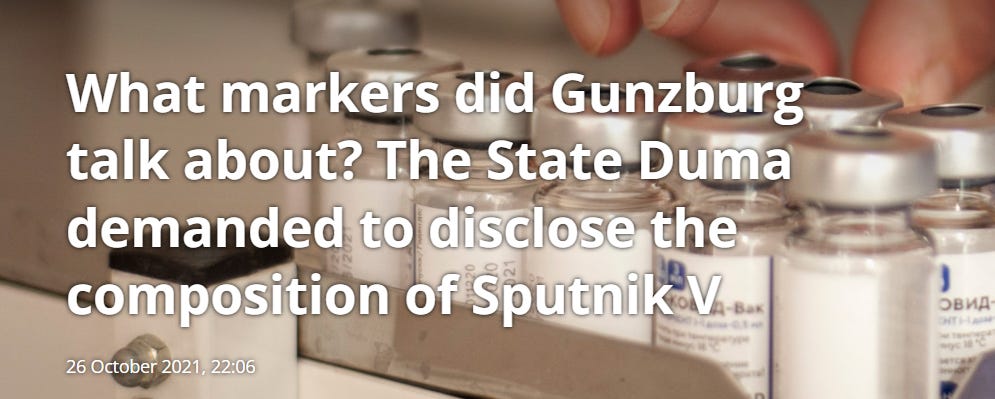


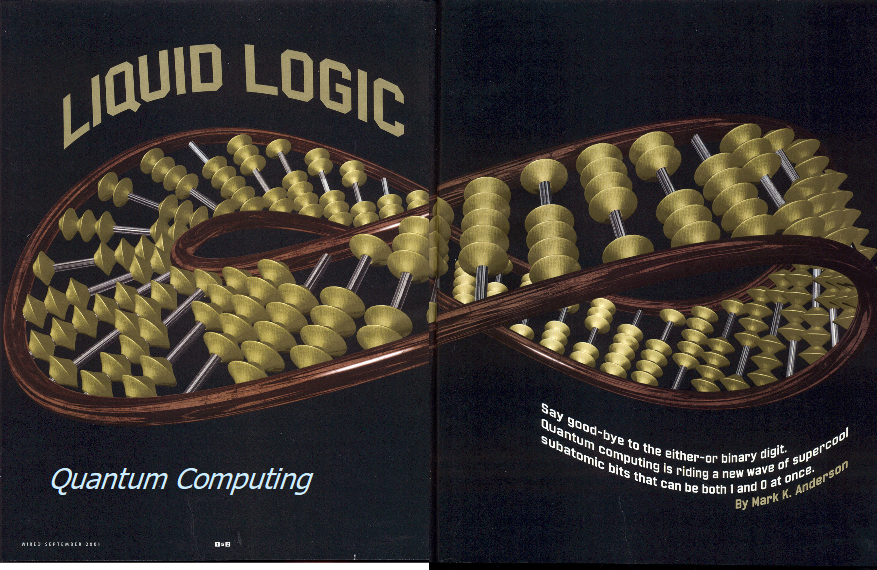
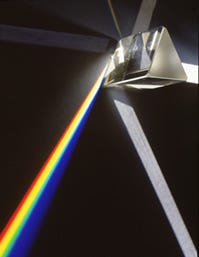




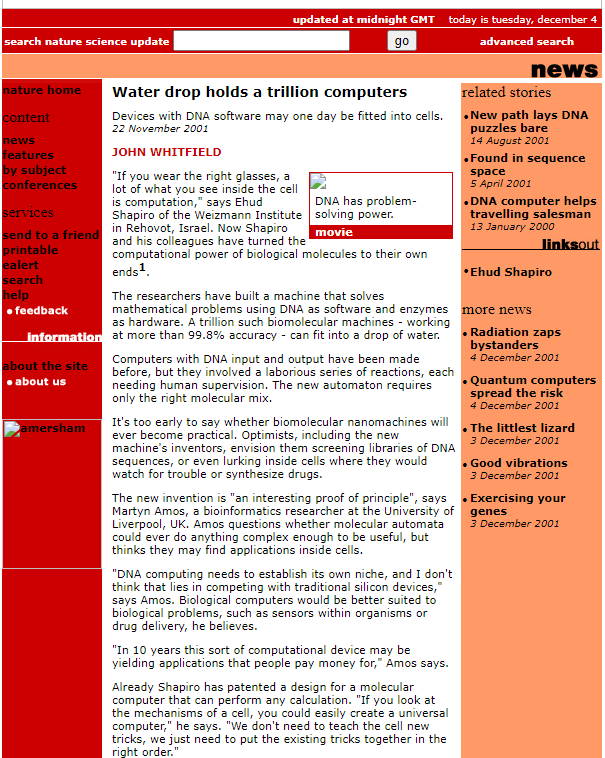










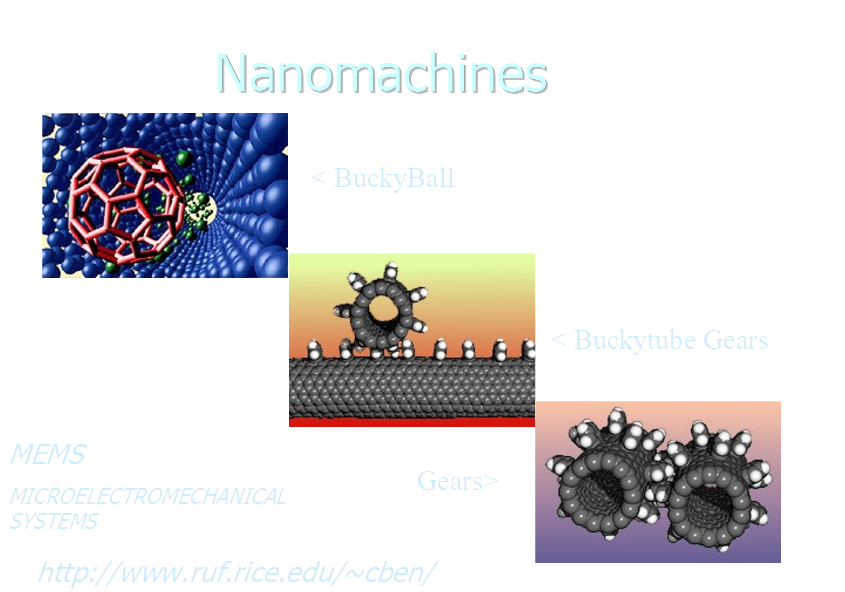
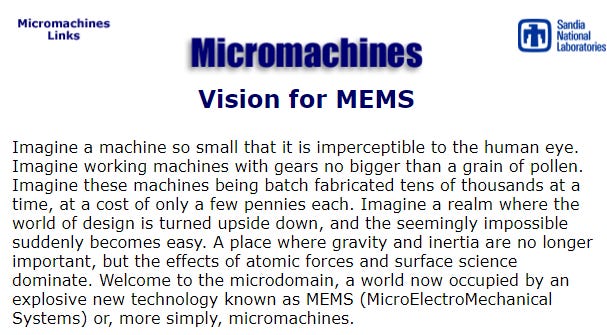
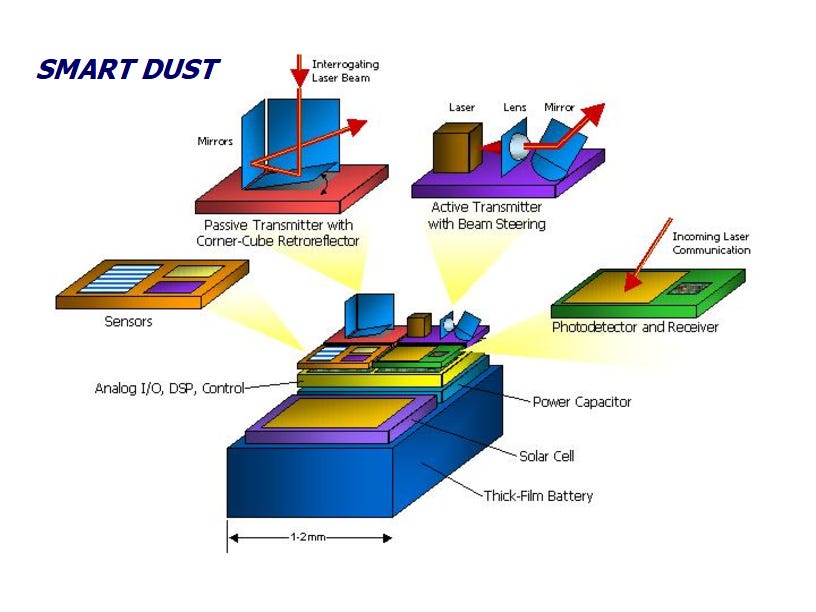






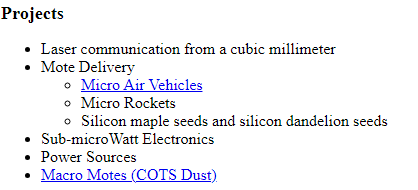

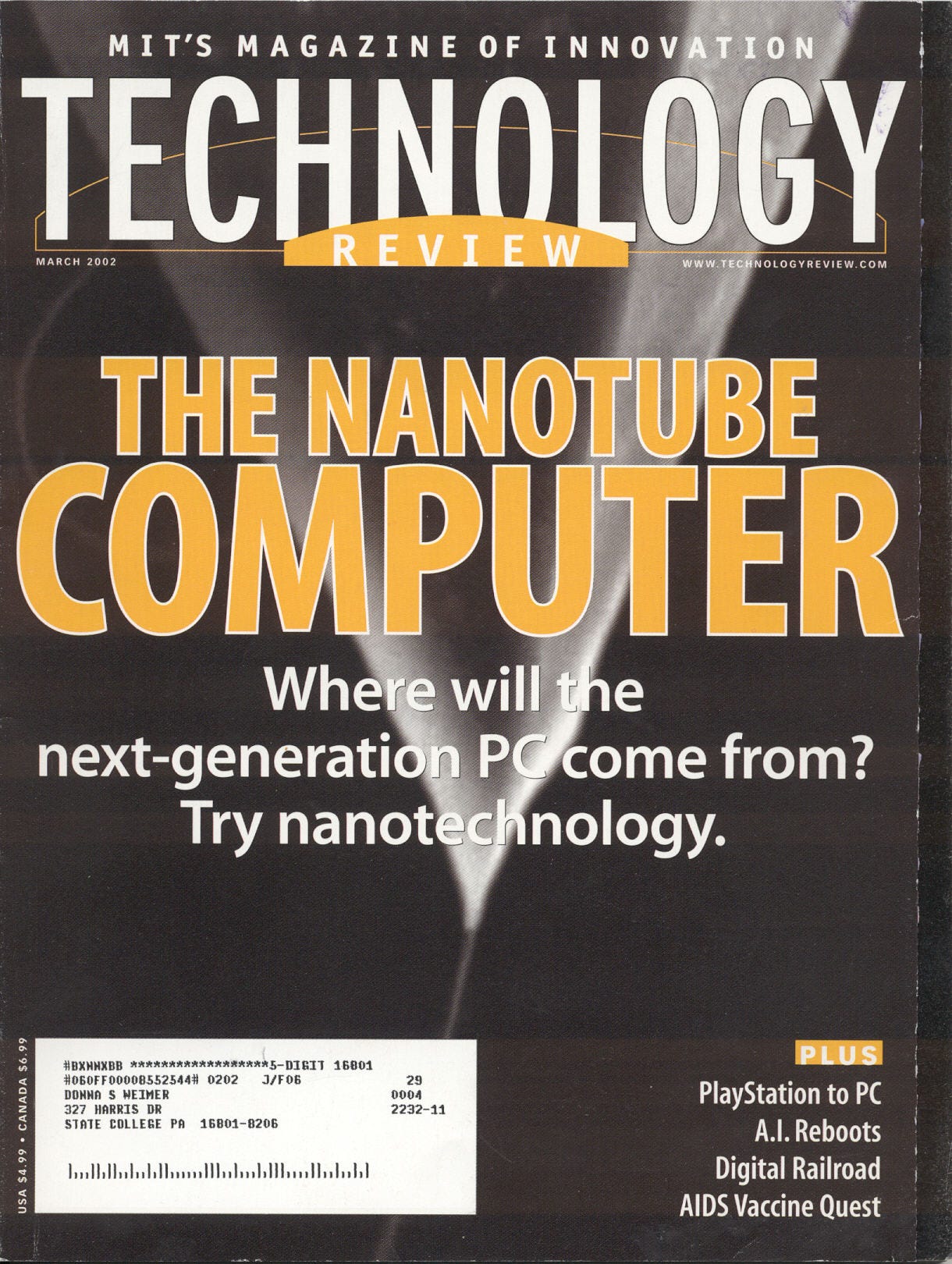









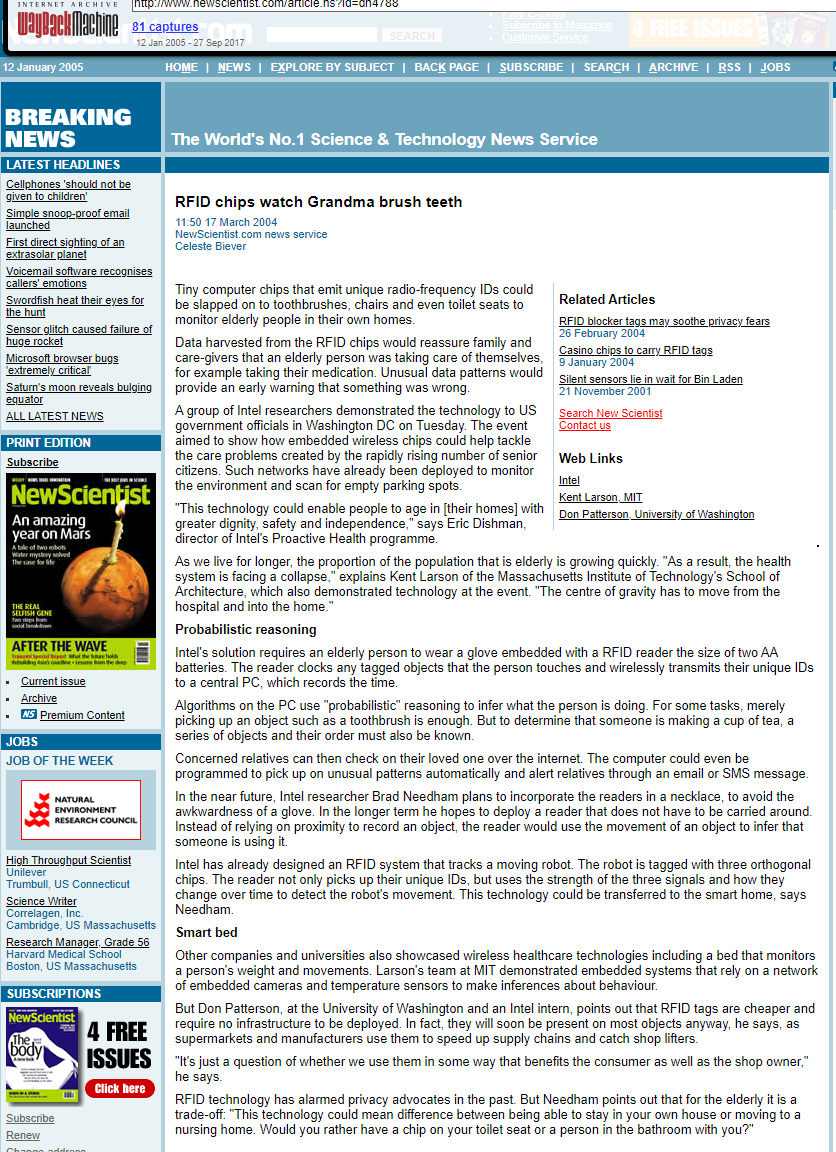






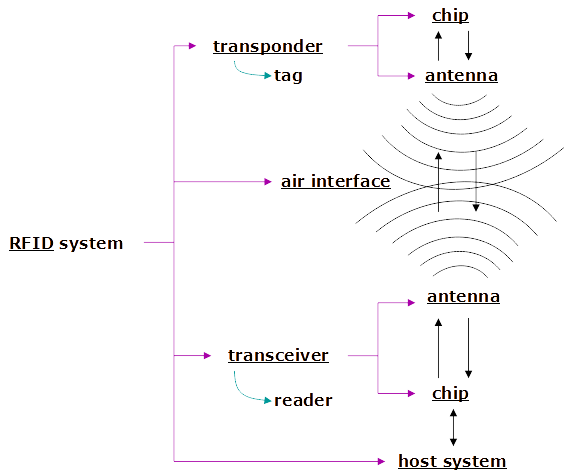









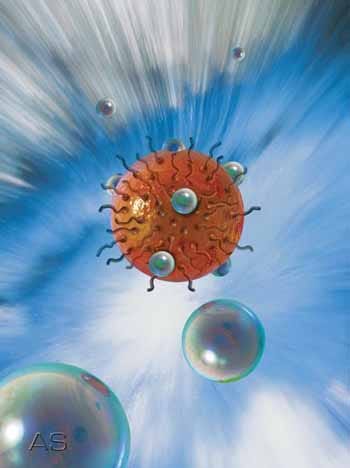
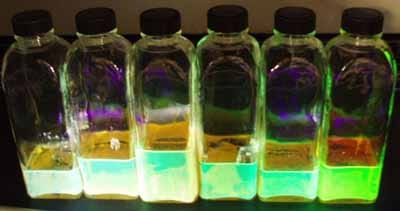
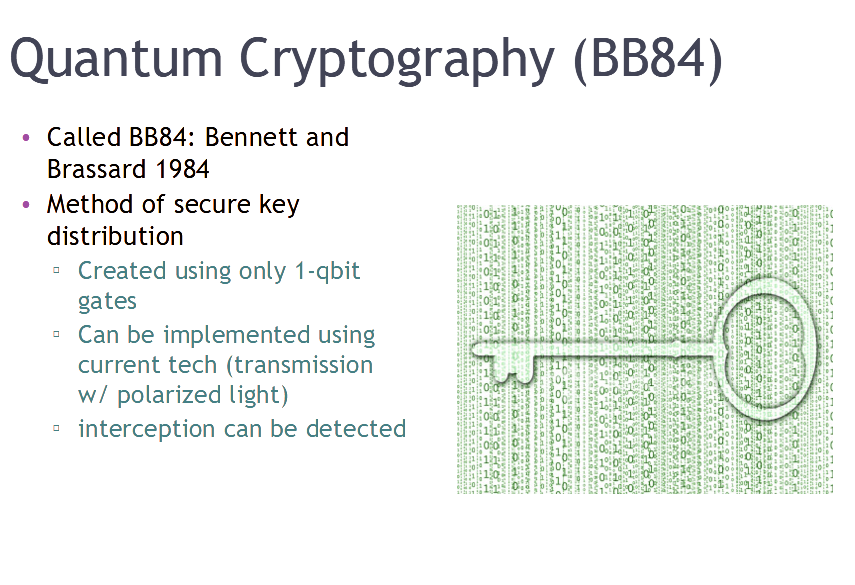













It's ridic/embarrassing and yet obvious why this issue is not discussed widely by now; it would shift all conversations, and make many current headlines irrelevant. Even a 10x photo lupe reveals many strange chemtrailed entities. The birds and other creatures will suffer along with us.
"The researchers have built a machine that solves mathematical problems using DNA as software and enzymes as hardware. A trillion such biomolecular machines—working at more than 99.8% accuracy—can fit into a drop of water." Old technology but indicative of what have they got today.
When we watch our blood cells turn into rectangular crystals we can only wonder.
A good compilation, Thanks outraged.